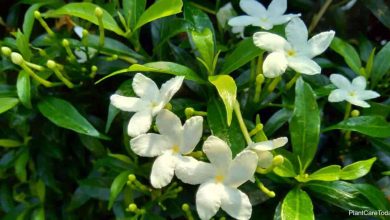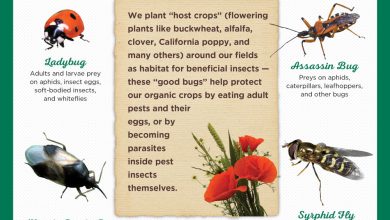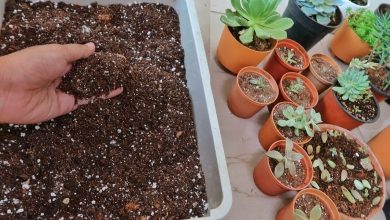Planting a Mandarin: [Cultivation, Care, Pests and Diseases]
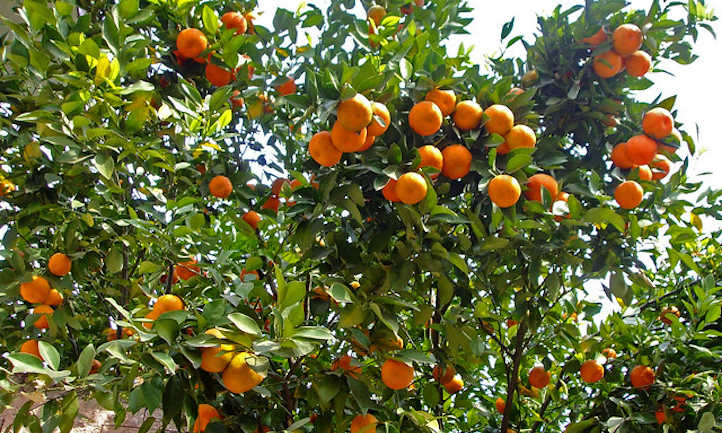
Important points when sowing Mandarin
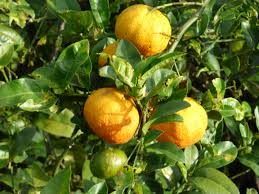 When is it planted? In February, and in early spring.
When is it planted? In February, and in early spring.- Where? In the garden, fruit plantations and in pots.
- How do we prepare the land? It does well to grow in sandy soils, but they must be nourished with a good fertilizer, compost and fertilizers that provide many nutrients.
- How do we water? Abundant irrigation, by sprinkling in cold regions, protects it from frost.
- How often do we water? Very early in the morning and late afternoon.
- Irrigation should be abundant, very early in the morning and late afternoon.
- Ideal temperature? Live calmly in temperatures around 23-35 ºC.
- What pH level does the soil need? A pH between 6 to 7 is ideal.
- When should you prune? Pruning should be done when weak, split, or dead leaves appear.
- What pests and diseases do they have ? They attack fungi and viruses, the citrus leafminer, mealybugs and whiteflies.
When to plant a mandarin?
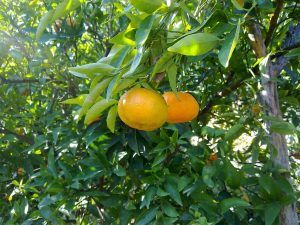 The mandarin tree is a citrus fruit tree that produces many satisfactions.
The mandarin tree is a citrus fruit tree that produces many satisfactions.
Originally from China, today its tasty acidic flavor has become so popular that there are around 30 really easy-to-grow varieties around the world.
The Clementine Clemenules species is the most common because it adapts to the climate of any hemisphere. It is very resistant.February is a key month to sow mandarin, lemon and orange trees, although this cultivation process can last until May.
Where to plant a mandarin?
Under natural conditions, the tree can reach between 2-4 meters in height in the garden, or in a plantation that ideally has a frame of 6×6 meters.
It is also very viable to plant a mandarin tree in a large pot, where it will also bear fruit, although of a smaller size.
How do we prepare the soil and what pH level is ideal?
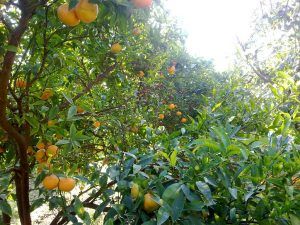 Although there are not very high demands at soil level, the mandarin will not do well in those that are saline, clayey or limestone. He prefers sandy ones.
Although there are not very high demands at soil level, the mandarin will not do well in those that are saline, clayey or limestone. He prefers sandy ones.
Because it needs good drainage. Citrus fruits do not tolerate waterlogging.In this sense, it is appropriate to mix the soil with some washed sand to improve aeration.
The soil requires many macronutrients and micronutrients in order to obtain a very healthy and good tasting crop. This is achieved with good fertilizers, homemade organic matter such as compost and fertilizers that compensate for some nutritional deficiencies in the soil.
Consequently, foliar applications and 1% zinc sulfate should be used because you have to be very vigilant and prevent iron, zinc and magnesium deficiencies.Iron must be provided in two doses or applications, only when bud break occurs in the spring.
The ideal pH for quality crops is between 6 and 7. Very basic or acidic soils contribute to the appearance of lesions in the mandarin, thanks to the toxicity of some elements.
A pH range of less than 4, that is, a very acidic soil or a very basic one, greater than 9, will cause injuries to the tree caused by hydrogen ions.
In a pot, the soil should be prepared with a mixture of 60% black peat and 30% perlite or another similar substrate. A little powdered organic fertilizer such as earthworm humus or horse manure is also added.
How often do we water and how do we do it?
This fruit tree requires generous doses of water daily. If it has been planted in a cold region, it is convenient to use sprinkler irrigation to protect it from frost.
Otherwise, drip irrigation works like a charm because you have to avoid saturating the soil.In summer you have to water it 2-3 times a week and every 5 to 6 days the rest of the year, abundantly.
How to plant a mandarin step by step?
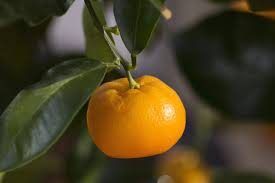 It is an exciting challenge to grow mandarins, either directly in the ground or in a large pot. Especially when the cultivation will be done with the pips or seeds that come from the fruit that you have eaten with such pleasure.
It is an exciting challenge to grow mandarins, either directly in the ground or in a large pot. Especially when the cultivation will be done with the pips or seeds that come from the fruit that you have eaten with such pleasure.
Let’s see, step by step, how to grow this citrus so famous for the rich flavor of its bright orange fruit. The best time is from the beginning of February, but there are those who prefer to do it from the end of March to May.
- The seeds collected from a ripe fruit must be washed and dried completely.
- Fill a container with water and add a teaspoon of bleach to give them a quick wash and dry them on a paper towel to dry.
- Look for a pot with a diameter of about 30 cm and have an excellent drainage system in the bottom (holes to filter excess water). Fill it about 3 inches with peat moss, or a seed germination mix. Garden soil doesn’t help because the seeds rot from microbes and won’t sprout.
- The pot must have an excellent drainage system at the bottom (holes to filter excess water).
- Make a hole in the center of the pot, about 2.5 cm deep and no wider than the diameter of a pencil. You must put the seed in it, covering it immediately with soil. It is recommended to use a single seed for each pot.
- Moistening the soil in the pot continues, but it must be done in a dimly lit area. A shaded environment is ideal, but always taking care that the temperature remains above 24ºC.
- Continue to keep the soil moist around the seed, with frequent but not excessive applications of water. The earth cannot be saturated.
- Water well but avoid excess in spring, because rainwater is very beneficial, and in winter, too. If there is a drought, increase the dose but without causing waterlogging.
- When the seedlings have already grown, between 3-4 weeks later, you should move the pot to a sunny place and maintain a prudent watering: in summer it is preferable to opt for regular watering first thing in the morning.
- When growing the tree in a pot, it is necessary to maintain its requirements for excellent natural lighting, constant watering, fertilizer and pruning to the maximum.
What care does a mandarin require?
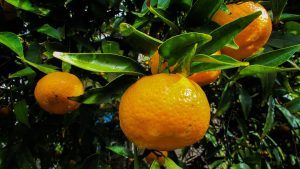 It is a tree that, under ideal conditions, can reach an average height of 2 meters and exhibit a more rounded crown than that of an orange tree, so it does very well as an ornamental plant in gardens.
It is a tree that, under ideal conditions, can reach an average height of 2 meters and exhibit a more rounded crown than that of an orange tree, so it does very well as an ornamental plant in gardens.
It is also self-fertile. It reproduces with the help of a pollinating agent such as bees that carry pollen from a male flower to a female one.
Climate
 Climate is important for citrus cultivation in general, because it influences vegetative growth, flowering and fruit quality.
Climate is important for citrus cultivation in general, because it influences vegetative growth, flowering and fruit quality.
The most suitable are the Mediterranean and tropical climates. Although it tolerates normal cold, if there are frequent frosts where you live, it is better to grow this citrus in a pot, to protect it at home when winter arrives.
Likewise, it tolerates drought quite well, so it supports growing in areas with low rainfall, given its origin from subtropical regions of the planet.So it is essential to prevent it from being exposed to snowfall or intense frost in winter.
Pass
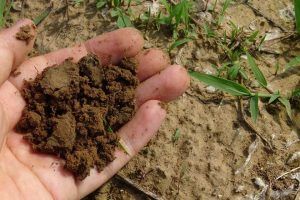 Experts recommend that the fertilization process should start only after the second budding begins, from the date of planting.
Experts recommend that the fertilization process should start only after the second budding begins, from the date of planting.
As is done with all citrus, the fertilizer must be done by foliar route, spraying the fertilizer on the leaves, or also by land, spreading it on the base of the plant, without approaching the trunk.
A specific fertilizer for citrus fruits is ideal. Full NPK fertilizer (18-6-6) is highly recommended.
Irrigation
One of the most important tips to achieve a successful plantation is to always keep the soil moist, especially in the first weeks after planting. This will allow it to establish itself firmly on the ground.
If the plant is in a pot inside the house, it should only be watered when the soil dries, because we should never allow it to get soaked or soaked in water.
Pruning
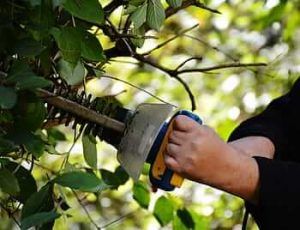 Pruning is generally applied from the third year of life of the mandarin tree and is done with emphasis on the elimination of the shoots that emerge from the central trunk, called stumps, in early spring, when there is no risk of it suffering from frost.
Pruning is generally applied from the third year of life of the mandarin tree and is done with emphasis on the elimination of the shoots that emerge from the central trunk, called stumps, in early spring, when there is no risk of it suffering from frost.
It also happens that many branches break when the fruiting period begins. It is essential to remove them, as with dead, dry or weak branches.
Likewise, it will be necessary to put support structures on some branches that tend to fall due to the weight of the fruits.All pruning waste can be used by crushing it vigorously, so that it can be used as fertilizer to be incorporated into the soil. It is a great tip that bears fruits of very good flavor.
When do we harvest mandarins?
Harvest times vary from species to species. Some species are generally harvested between September to January, but there are others that will bear fruit between January and May.
What pests and diseases attack the mandarin?
Of all the citrus fruits, the mandarin is the most resistant to pests and diseases. But if you do not receive a correct fertilizer, adequate doses of quality water, you can suffer from some ills that will affect you tremendously. Let’s see.
Diseases
Phytophthora
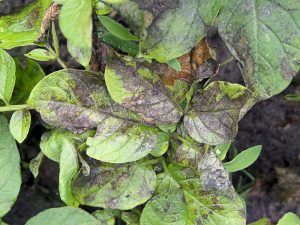 When there is excess irrigation, a fungus favored by high humidity usually appears. It first attacks roots and leaves.
When there is excess irrigation, a fungus favored by high humidity usually appears. It first attacks roots and leaves.
It produces brown spots on the upper part of the leaves and a sort of grayish-white powder on the underside.
It rots the root system and weakens the plant to death, if copper-based fungicides are not used as a curative treatment.
Viruses and viroids
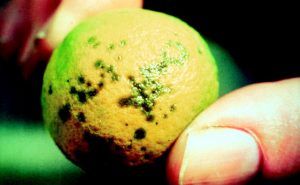 There are very lethal viruses for the mandarin such as exocortis, psoriasis and the sadness virus, capable of undermining the tree with thousands of microorganisms, causing colored mosaics on the leaves and fruits.
There are very lethal viruses for the mandarin such as exocortis, psoriasis and the sadness virus, capable of undermining the tree with thousands of microorganisms, causing colored mosaics on the leaves and fruits.
Consequently, the following symptoms are produced: leaf fall, general weakening, excess of fruits and the death of the tree in the most serious cases.
There is no cure for these virulent diseases, which is why it is very important to buy certified plants from trusted nurseries.
pests
The red spider, cochineal, whitefly and the citrus miner are the pests that most frequently attack the mandarin.Remedies such as Neem oil are usually very effective, along with other insecticides also preferably natural.
To learn more, you can see: Mandarin diseases.
How long does the mandarin live?
A mandarin tree is capable of living for up to 100 years when it is in ideal growing conditions.
How long does it take to grow the mandarin?
The mandarin grows in the time covered by its first 10 years of life.
How long does it take to produce fruit?
It bears fruit quickly and just 1 year after planting, its first production can already be seen.
Can it be grown in a pot?
Yes, the mandarin in a pot is worked, enjoying its production and requiring the application of basic care so that it prospers without problems.
How many times does the mandarin produce fruit?
Under ideal conditions, the mandarin offers up to 3 harvests per year.
Should the mandarin be pollinated to obtain fruit?
Yes, it should be pollinated, either naturally with pollinating insects or with human intervention through manual pollination.
How cold can mandarin tolerate?
It is able to tolerate the cold and even an eventual frost that is not below -6° C.
How many mandarins can be planted per hectare?
The number of mandarins recommended for use per hectare of land varies from 300 to 400 specimens.
How much heat and/or drought can the mandarin tree tolerate?
Withstands heat up to a recommended maximum of 35° C.
It is not very resistant to drought, so it is better to keep it well hydrated, especially in its productive stage.

